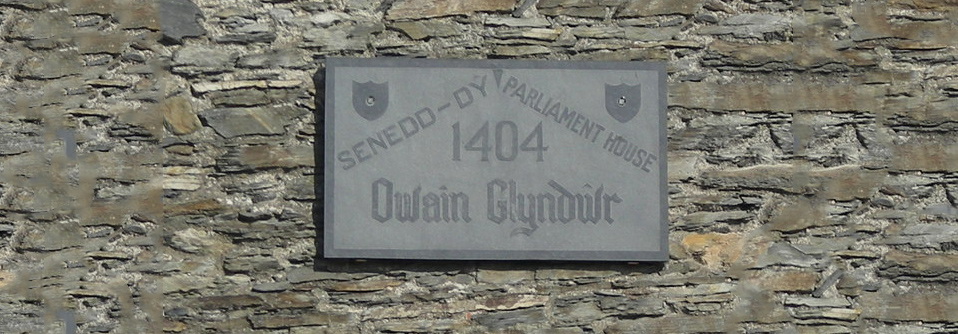Plas Beddowe(n): The Mansion of Owain’s Grave

The disappearance of Owain Glyn D ̆r in 1415 is probably the most celebrated unsolved mystery in the history of Wales. His revolt against the English crown and his struggle to establish an independent Welsh state with its own native prince, language, government, church and universities is well documented. R. R. Davies’ comprehensive study of Owain in his historical context, The Revolt of Owain Glyn D ̆r (1995),1 is a magnificent sequel to Sir John Lloyd’s seminal book of 1931.2 However, when it comes to the death of Owain and the location of his final resting place there is practically no reliable contemporary documentary evidence.
The most popular account tells how Owain became a fugitive and eventually took refuge with his daughter at Monnington Straddel where he died and is buried.3 This account is given some credibility because his daughter, Alice, did indeed marry John Scudamore and live at Monnington,4 although this place has been confused with Monnington-on-Wye, a different village.5 Other places claimed as the burial ground include Valle Crucis Abbey, the ancestral burial place of Owain’s family, Bangor Cathedral, and numerous others. Sadly, it seems that no-one can provide incontrovertible documentary evidence for any of these places. A study of the sources published by J. R. S. Phillips in 1972 includes previously unconsidered fifteenth-century Welsh manuscripts in the National Library of Wales and the Bodleian Library.6 These, quite independently of each other, record a tradition of very early date that Owain Glyn D ̆r died in September 1415, and the study concludes, ‘there seems to be no evidence to make such a date impossible’.7 Indeed, this is concordant with the offer of a royal pardon to Owain in July 14158 and a similar offer made to Owain’s son, Meredudd, in February 1416 which, significantly, makes no mention of Owain.9 Furthermore, from internal evidence it can be deduced that one of the manuscripts (Peniarth MS 26) was written in the area around Oswestry, Owain’s home district. But no mention is made of his burial.10
£3.00
or to access all content on this site, join today

For £35 a year you can access all lectures and articles on this site, attend lectures and receive our yearly Transactions
Filter by Volume
Filter by Subject
- 16th Century
- 18th century
- 19th century
- 20th century
- Abertillery
- Acts of Union
- Archaeology
- Architecture
- Arts
- Autobiography
- Bible
- Biography
- Burma
- Cardiff
- chemistry
- Climate change
- constitutional
- contemporary
- Cycling
- Cymmrodorion Society
- David History
- David Jones
- Development Bank of Wales
- Devolution
- Dylan Thomas
- Economics
- Education
- Edward Lhuyd
- eighteenth century
- Environment
- Film
- Folk Song
- Geology
- health
- Heritage
- Higher Education
- Historiography
- History
- History of Art
- History of Medicine
- History of music
- History of the Book
- history; History
- Horticulture
- Industrial History
- Intellectual History
- Iolo Morganwg
- Islam
- Jews
- John Nash
- Language
- Law
- Law constitutional
- Legal History
- Legal Law
- Literary History
- Literature
- Liverpool
- Lloyd George
- London Welsh
- Male voice choirs
- Manuscripts
- Media
- medieva
- medieval
- Medieval History
- Medieval Literature
- medieval Poetry
- Military History
- Museums
- Music
- Myth
- Owain Glyndŵr
- Peter Warlock
- Philadelphia
- Poetry
- political
- Political History
- Politics
- prose fiction
- Railways
- Religion
- Religious History
- Science
- sixteenth century
- social
- Social History
- Sport
- Suffragette movement
- Swansea
- Tourism
- travel
- Tudors
- twentieth century
- Urban History
- Vikings
- Waldo Williams
- Wales
- wellbeing
- Welsh development and investment
- Welsh Language
- Welsh writing in English
- Welsh; History
- Wild Wales
- WW1
- WW2

